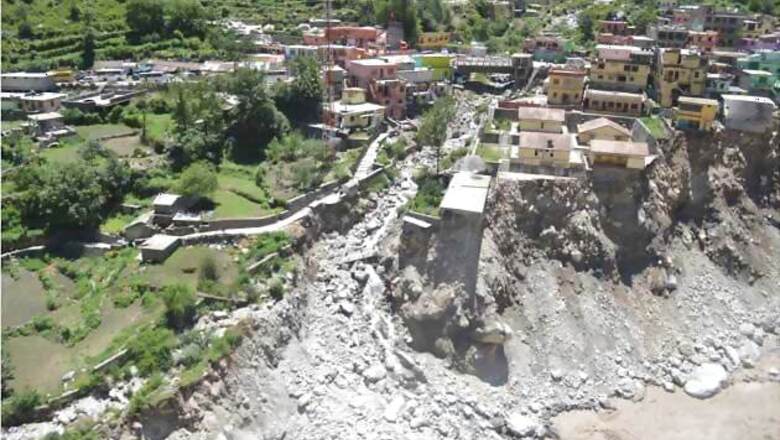
views
Nine months after a devastating cloudburst caused death and destruction in Uttarakhand, a vast mountainous region leading to the Kedarnath shrine is yet to get its roads back.
Vehicles precariously weave through several stretches of what remains of the original tarred roads, some still treacherously cracked and damaged in such a way that it is a miracle more motorists don't get killed.
At numerous places, the steel girders and the low stone walls that mark the edge of the winding roads in the hills don't exist any more. They were consumed by flash floods in the Mandakini river in June 2013.
A momentary lapse can plunge a motorist deep into the valley, where the Mandakini, coming from the glacial slopes above Kedarnath, flows with a gentle roar but minus the fury it unleashed last year.
What now exists in many stretches are uneven mountain paths, of mud and pebbles, the original tarred roads having been washed away. At most places, even these are not at even level, rising up and down steeply by several metres.
In some areas, these so-called roads are now so narrow -- due to chipping at the edges -- that only one vehicle can pass at a time.
One such bottleneck is almost one kilometre long. Motorists flash their headlights to warn those coming from the opposite side to halt.
If all this wasn't enough, huge boulders continue to roll down the mountains. The locals blame this on the dam building in the mountains. And there are no street lights, making night driving extremely dangerous.
An IANS correspondent saw no major sign of road construction as he drove from Dehradun to Syalsaur, which is located 50 km short of Gaurikund, from where one treks to reach the Kedarnath shrine.
The exception was four isolated spots, including one where work was being done by a Rishikesh-based private company.
Residents and local officials admit that several months have been wasted due to the Uttarakhand government's indecision over who should rebuild the roads: state authorities or the central Border Roads Organisation (BRO).
"There is simply no policy here," rued a government official, speaking to IANS on the condition of anonymity. "It is unbelievable that roads destroyed months ago have not been rebuilt even after nine months. How do you explain this?"
And monsoon -- when road work won't be possible -- will start soon.
"We have lost three or four crucial months when the dry season would have helped construction work," the official told IANS, adding that the BRO was starved of funds in a major way.
A BRO source said Rs 43 crore was sanctioned recently, with a fiat to speed up road construction before the seasonal pilgrimage in the Kedarnath region starts in May.
From Rudraprayag, where the Mandakini and the Alaknanda merge to become the Ganga downstream, one can still see signs of last year's fury all the way up to Syalsaur, the route passing through small townships.
A collapsed steel bridge is still submerged partly in the river near Rudraprayag. There are broken road signs, an abandoned petrol station, remains of the original tarred roads, precariously placed houses minus their foundation and tell-tale signs of hotels which once existed.
Syalsaur itself was home to 13 hotels, constructed in a row and facing the Mandakini river. All were destroyed.
The only hotel still standing was built away from the river.
"How can a country of India's size and resources not have constructed roads for its own people all these months?" asked a school teacher. "Would it be such a mess if VVIPs had lived here?"


















Comments
0 comment